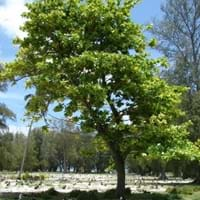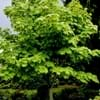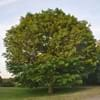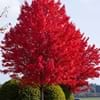Life Span
Perennial
Perennial
Type
Fruit, Palm or Cycad, Tree
Fruit, Perennial, Tree
Origin
Not Available
Africa, Asia, Australia
Types
Not Available
Not Available
Habitat
Humid climates, sandy seeps, shores, tropical environments
Subtropical climates, Tropical areas
USDA Hardiness Zone
5-12
Not Available
AHS Heat Zone
12-10
Not Available
Sunset Zone
H2
Not Available
Habit
Upright/Erect
Spreading
Flower Color
Yellow Brown
Non Flowering Plant
Flower Color Modifier
Bicolor
Not Available
Fruit Color
Green
Dark Brown, Green
Leaf Color in Spring
Green
Dark Green
Leaf Color in Summer
Golden Green
Green
Leaf Color in Fall
Green
Red
Leaf Color in Winter
Green
Red
Leaf Shape
Pinnate
Broadly Ovate
Plant Season
All year
Summer
Sunlight
Full Sun, Part sun
Full Sun, Partial Sun
Type of Soil
Loam, Sand
Loam
The pH of Soil
Neutral, Slightly Acidic, Slightly Alkaline
Acidic, Neutral
Soil Drainage
Well drained
Well drained
Bloom Time
Not Available
Summer
Where to Plant?
Ground
Container, Ground
How to Plant?
Seedlings, Transplanting
Seedlings, Stem Planting
Plant Maintenance
Medium
Low
Watering Requirements
Reduce watering during fall, Water daily during growing season, Water frequently while growing
Needs less watering
In Summer
Lots of watering
Ample Water
In Spring
Moderate
Moderate
In Winter
Average Water
Average Water
Soil pH
Neutral, Slightly Acidic, Slightly Alkaline
Acidic, Neutral
Soil Type
Loam, Sand
Loam
Soil Drainage Capacity
Well drained
Well drained
Sun Exposure
Full Sun, Part sun
Full Sun, Partial Sun
Pruning
Cut limbs, Remove dead branches
Remove dead branches, Remove dead leaves
Fertilizers
Nitrogen, Phosphorous, Potassium, slow-release fertilizers
All-Purpose Liquid Fertilizer
Pests and Diseases
Bud rot, Cadang-cadang, Coconut bug, Coconut foliar decay, Coconut scale, Ganoderma butt rot, Gray leaf blight, Lethal bole rot, Lethal yellowing, Mealybugs, nutfall, Red ring nematode, Stem bleeding disease
Not Available
Plant Tolerance
Salt
Dry soil
Flower Petal Number
Single
Not Available
Foliage Texture
Fine
Fine
Foliage Sheen
Matte
Glossy
Attracts
Not Available
Birds
Allergy
Abdominal pain, Anaphylaxis, cramps, Mouth itching, Nasal Congestion, Nausea, Runny nose, Skin irritation, Throat itching
Asthma
Aesthetic Uses
Beautification, Landscape Designing, Showy Purposes
Showy Purposes
Beauty Benefits
Good for skin, Good for the Scalp, Hair Conditioner, Heals Damaged Hair, Makes Hair Silkier, Making cosmetics, Removes dandruff, Restores Hair Colour
Making cosmetics
Environmental Uses
Air purification, No fertilizer, pesticides, or herbicides needed, Wildlife
Air purification, Food for birds
Medicinal Uses
Antibacterial, anti-cancer, Antifungal, Antioxidants, Antiviral, Digestion problems, Heart problems, Immunity, Skin Disorders, Weight loss
Energy, Minerals, ß-carotene, Vitamin A, Vitamin C, Vitamin E
Part of Plant Used
Whole plant
Fruits
Other Uses
Air freshner, Animal Feed, Application in Furniture, Application in Handicrafts, For making oil for cosmetics, Oil is used for aromatherapy, Traditional medicine, Used as a nutritious food item, Used as a vegetable oil
Grown for shade, Used As Food
Used As Indoor Plant
No
No
Used As Outdoor Plant
Yes
Yes
Garden Design
Edible, Feature Plant, Fruit Tree, Landscape, Tropical
Edible, Fruit Tree
Botanical Name
Cocos nucifera
Terminalia catappa
Common Name
Coconut Palm, coconut tree
Bengal almond, country almond, false kamani, Indian almond, Malabar almond, sea almond, tropical almond
In Hindi
नारियल का पेड़
जंगली बादाम
In German
Kokospalme
Katappenbaum, Seemandelbaum, Indische Mandel
In French
Cocotier
Badamier
In Spanish
El cocotero
almendro malabar, almendro de los trópicos, almendrón, falso kamani, Egombegombe
In Greek
καρύδας δέντρο
Ινδικό αμύγδαλο
In Portuguese
Coqueiro
amêndoa, amendoeira, castanheira, anoz, árvore-de-anoz, castanholeira, coração-de-nego, castanhola, sete-copas, chapéu-de-sol, guarda-sol, terminália, figueira-da-índia
In Polish
Drzewo kokosowe
Migdałecznik właściwy
In Latin
dolor ligno
inti almont
Phylum
Magnoliophyta
Magnoliophyta
Class
Liliopsida
Magnoliopsida
Family
Aceraceae
Combretaceae
Clade
Angiosperms, Commelinids, Monocots
Angiosperms, Eudicots, Rosids
Tribe
Cocoeae
Not Available
Subfamily
Arecoideae
Not Available
Number of Species
Not Available
Properties of Coconut Tree and Indian Almond
Wondering what are the properties of Coconut Tree and Indian Almond? We provide you with everything About Coconut Tree and Indian Almond. Coconut Tree doesn't have thorns and Indian Almond doesn't have thorns. Also Coconut Tree does not have fragrant flowers. Coconut Tree has allergic reactions like Abdominal pain, Anaphylaxis, cramps, Mouth itching, Nasal Congestion, Nausea, Runny nose, Skin irritation and Throat itching and Indian Almond has allergic reactions like Abdominal pain, Anaphylaxis, cramps, Mouth itching, Nasal Congestion, Nausea, Runny nose, Skin irritation and Throat itching. Compare all the properties and characteristics of these two plants. Find out which of these plant can be used as indoor plant. If you are interested to decorate your house and garden, find out aesthetic uses, compare them and select the plant which will beautify your surrounding. Along with beautification, try comparing medicinal and edible uses of Coconut Tree and Indian Almond and you can choose the plant having best and most benefits.
Season and Care of Coconut Tree and Indian Almond
Season and care of Coconut Tree and Indian Almond is important to know. While considering everything about Coconut Tree and Indian Almond Care, growing season is an essential factor. Coconut Tree season is All year and Indian Almond season is All year. The type of soil for Coconut Tree is Loam, Sand and for Indian Almond is Loam while the PH of soil for Coconut Tree is Neutral, Slightly Acidic, Slightly Alkaline and for Indian Almond is Acidic, Neutral.
Coconut Tree and Indian Almond Physical Information
Coconut Tree and Indian Almond physical information is very important for comparison. Coconut Tree height is 2,900.00 cm and width 700.00 cm whereas Indian Almond height is 500.00 cm and width 600.00 cm. The color specification of Coconut Tree and Indian Almond are as follows:
Coconut Tree flower color: Yellow Brown
Coconut Tree leaf color: Green
Indian Almond flower color: Non Flowering Plant
- Indian Almond leaf color: Dark Green
Care of Coconut Tree and Indian Almond
Care of Coconut Tree and Indian Almond include pruning, fertilizers, watering etc. Coconut Tree pruning is done Cut limbs and Remove dead branches and Indian Almond pruning is done Remove dead branches and Remove dead leaves. In summer Coconut Tree needs Lots of watering and in winter, it needs Average Water. Whereas, in summer Indian Almond needs Ample Water and in winter, it needs Average Water.





